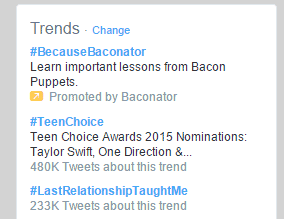Be honest. If you saw your content today for the first time, would you share it?
We’ve become a social culture. But there are consistent patterns, or “rules,” to the kind of content that gets shared.
We share to look good, to make people laugh, or to support a cause.
In other words, we share for emotional reasons—the ideas, not the quality of writing.
I was discussing this is Area 51 not long ago and took an informal poll. We agreed that there are five things that tend to get shared.
Write this type of content, and your share numbers will rise. I can almost guarantee it.
1. Relevant and Timely
Relevance is subjective, of course. It depends on who your target audience is and what they care about.
In general, your content will be seen as relevant if it answers their questions or gives unique information. But to be sharable, it also need to be fun (or at least easy) to read.
Another type of relevancy has to do with current events. Your content relates to a trending topic or big event. Any time you can tap into current events for your content, you become a bigger part of your audience’s world. That makes you automatically relevant
For example, for the Daily Egg, one of my writers proposed an article related to the Windows 10 launch, which we were able to publish in the days prior to the launch. We didn’t report on the Windows 10 launch. We did a “lessons learned from” post—so it was useful to our audience but tied to a current event they may have been watching.
All your articles should be related to the core topic your followers expect from you. A small percentage may also relate to current events.
I don’t recommend a large percentage of “newsjacked” topics, by the way. Evergreen topics, which aren’t quickly outdated, are the ones that keep your traffic high. But as you can see, following the trends gives you good engagement when the issue or topic is fresh.
How do you know what’s trending?
Sometimes it’s obvious. It’s hard to miss the Super Bowl or presidential elections. But the trends that are most likely to be useful for your content are less obvious. Listen to the conversations taking place around you. Or let Twitter and Facebook tell you:
What’s trending on Twitter
What’s trending on Facebook
2. You Said It For Me
Sometimes we feel strongly about something but haven’t found a way to express our feelings. When we read something that puts words to those thoughts, we’re delighted to share.
This short post from Rand Fishkin is a good example. Cofounder of Moz and Inbound.org, Rand had been struggling with depression before finally stepping down from the helm of Moz. (You can read that lengthy article here.)
Now he openly discusses issues related to depression and self-esteem.
In this article, he shares a thought about self-esteem in an honest, transparent way. 36 comments—a total of 4,054 words on an article that’s only 499 words—tells you he’s connecting with his audience. I don’t see share numbers on the page, but I’d be willing to bet they’re good.
3. Made Me Laugh
Most business blogs are all business, so when you see a piece that makes you laugh out loud, you start feeling love and affection for the writer. You also feel a lot more generous when you see the share buttons.
Too often when writing content for serious or “boring” industries, we take a serious tone that’s less engaging than it could be.
Throughout my years of managing content, I’ve been impressed with the ability of writers to make any topic interesting. A lighthearted tone makes even a boring topic interesting.
4. Just Wow! (Emotional Response or I’m Super Impressed)
This is the response most bloggers are looking for when they publish epic posts or advanced guides.
The sheer act of generously giving away everything a reader needs to know on the subject generates that Wow! response.
I experienced this first-hand when I co-authored the Advanced Guide to Content Marketing with Neil Patel. He had already published several of these guides. Mine was one of the most in-depth to that point. And yes, the response was amazing.
This piece was especially successful because it was part of a series. If you want to build engagement, create one or two super impressive posts. If you want to generate a loyal following like Neil’s, create a series of them.
The share numbers aren’t published, so I don’t have specific numbers, but this piece generated a lot of engagement. Aside from the social shares we got when the book went live…
- We were mentioned in Ann Handley’s book, Everybody Writes.
- We’ve received emails from fans.
- Even now, more than 2 years later, we still see tweets about it.
5. Helps Me Take a Stand
Sometimes, people enjoy knowing they aren’t the only ones who believe in or stand for something, whether that’s commas or chocolate or a social issue.
When they find an article that agrees with their stance, they want to share it. For example, this article is short. It does little more than preach. But it got featured in a top content marketing group on LinkedIn.
When you visit the blog, the share numbers aren’t great.
- Facebook – 2
- Twitter – 15
- Google+ – 1
- LinkedIn – 8
Here’s the lesson: Taking a strong stand on a relevant topic got it the attention it wasn’t getting from normal blog promotion strategies.
Not bad for a rant that was probably written in 30 minutes or less.
Bonus Tip: Mix It Up
James Altucher is someone who can express what I’m thinking, help me take a stand, and generate a belly laugh all at the same time. I especially like that he’s willing to say the things I usually only think.
When reading his article, “The Amazing Benefits of Super-Mediocrity,” I laughed, nodded my head, and felt a lot better about that internal dialog that wouldn’t shut up.
Ironically, this is a similar topic to Rand Fishkin’s article, reviewed above. But what a difference! Rand struck an emotional chord. James made me bust out laughing.
Both work, but laughter may work better:
- 28,917 views
- 403 thumbs up
- 101 comments
Now that’s engagement.
What’s your favorite engagement tactic? Even more to the point, are you willing to break from the ideal of being a “great” writer and becoming a writer of content that gets shared?





